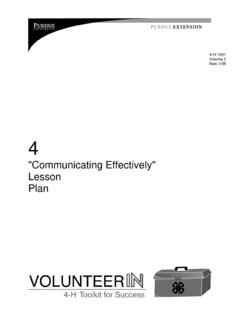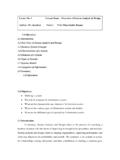Transcription of Safer Care - NHS England
1 Safer CareSBARS ituation Background Assessment RecommendationImplementation and Training Guide 2 ContentsWelcome and more about this guide ..5 What is SBAR? ..6 How can SBAR help you? ..7 How does SBAR work? ..8 What should an SBAR communication convey? ..9 Situation ..9 Background ..9 Assessment ..10 Recommendation ..11 Readback ..11 Implementing SBAR Using the Model for Improvement ..12 Training staff to use SBAR ..20 Suggested lesson plan and activities ..21 SBAR film scenarios and tips for selection ..25 Examples of SBAR tools ..27 Further reading and resources ..28 Acknowledgements and thanks ..29 3 4 SBAR can be used very effectively to escalate a clinical problem that requires immediate attention, or to facilitate efficient handover.
2 5 Welcome Getting started with SBARW elcome to the SBAR Training Guide. It has been developed by the NHS Institute for Innovation and Improvement working closely with clinicians and other frontline staff in the training guide is part of a suite of products designed to help you introduce and implement SBAR in your organisation or team. The guide will help cement your own understanding of the SBAR approach and support you in planning and delivering your own SBAR training either as a classroom event, in a clinical setting, as an informal session or as part of a more structured learning curriculum. DVD containing a series of filmed scenarios highlighting the difference of communicating with and without SBAR SBAR resources downloadable at Series of filmed scenarios PowerPoint presentation introducing SBAR An SBAR e-learning module SBAR prompt cards and padsSBAR resources included in this guide: 6 What is SBAR?
3 SBAR is an easy to remember mechanism you can use to frame communications or conversations. It is a structured way of communicating information that requires a response from the receiver. As such, SBAR can be used very effectively to escalate a clinical problem that requires immediate attention, or to facilitate efficient handover of patients between clinicians or clinical teams. SBAR stands for:SituationBackgroundAssessment RecommendationThese are the key building blocks for communicating critical information that requires attention and action thus contributing to effective escalation and increased patient safety. 7 How can SBAR help you?
4 Inadequate verbal and written communication is recognised as being the most common root cause of serious errors both clinically and organisationally. There are some fundamental barriers to communication across different disciplines and levels of staff. These include hierarchy, gender, ethnic background and differences in communication styles between disciplines and individuals. Communication is more effective in teams where there are standard communication structures in place. This is where SBAR can add real value: SBAR takes the uncertainty out of important communications. It prevents the use of assumptions, vagueness or reticence that sometimes occur particularly when staff are uncomfortable about making a recommendation due to inexperience or their position in the hierarchy.
5 In short, SBAR prevents the hit and miss process of hinting and hoping . SBAR helps prevent breakdowns in verbal and written communication by creating a shared mental model around all patient handovers and situations requiring escalation, or critical exchange of information. SBAR is an effective way of levelling the traditional hierarchy between doctors and other care givers by building a common language for communicating critical events and reducing communication barriers between different healthcare professionals. SBAR is easy to remember and encourages staff to think and prepare before communicating . SBAR can make handovers quicker yet more effective, thereby releasing more time for clinical prevents the hit and miss process of hinting and hoping 8 How does SBAR work?
6 SBAR allows staff to communicate assertively and effectively , reducing vagueness and the need for repetition. The SBAR process consists of four standardised stages or prompts that help staff to anticipate the information needed by colleagues and formulate important communications with the right level of detail. The tool can be used to construct letters, e-mails or other communication at any stage of the patient s journey - for example the content of a GP s referral letter, consultant-to-consultant referrals and communicating discharge back to a GP. When staff use the tool in a clinical setting, they make a recommendation which ensures that the reason for the communication is clear.
7 Recommended uses and settings for SBAR: Urgent or non-urgent communications Verbal or written exchanges Emails Escalation and handover Clinical or managerial environmentsThe SBAR process consists of four standardised stages or prompts that help staff to anticipate the information needed by colleagues and formulate important communications with the right level of detail 9 What should an SBAR communication convey? Identify yourself and the site/unit you are calling from Identify the patient by name and the reason for your report Describe your concern. Firstly, describe the specific situation about which you are calling, including the patient s name, consultant, patient location, resuscitation status and vital signs.
8 An example of a script would be: This is Lou James a registered nurse on Nightingale Ward. The reason I m calling is that Mrs Taylor in room 225 has become suddenly short of breath, her oxygen saturation has dropped to 88 per cent on room air, her respiration rate is 24 per minute, her heart rate is 110 and her blood pressure is 85 Taylor is a 69-year-old woman who was admitted from home three days ago with a community-acquired chest infection. She has been on intravenous antibiotics and appeared, until now, to be doing well. She is normally fit and well and : Situation Give the reason for the patient s admission Explain significant medical history Inform the consultant of the patient s background: admitting diagnosis, date of admission, prior procedures, current medications, allergies, pertinent laboratory results and other relevant diagnostic results.
9 For this, you need to have collected information from the patient s chart, flow sheets and progress notes. For example:B: Background 10 Vital signs Clinical impressions, concerns. An example of what you might say or write is: You need to think critically when informing the doctor of your assessment of the situation. This means that you need to have considered what might be the underlying reason for your patient s condition. Not only have you reviewed your findings from your assessment, you have also consolidated these with other objective indicators, such as laboratory you do not have an assessment, you may say: OrI think she may have had a pulmonary embolus I m not sure what the problem is, but I am worriedA: Assessment Mrs Taylor s vital signs have been stable from admission but deteriorated suddenly.
10 She is also complaining of chest pain and there appears to be blood in her sputum. She has not been receiving any venous thromboembolism prophylaxis. 11 Explain what you need - be specific about the request and time frame Make suggestions Clarify expectations. Finally, what is your recommendation? That is, what would you like to happen by the end of the conversation or communication with the doctor? Readback: making sure you have been understoodFollowing any communication using SBAR, it is important that the receiver of the information reads back a summary of the information to ensure accuracy and clarity. The readback will follow the same SBAR format.


















